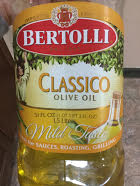A compound is formed from atoms of different chemical elements. The different elements are then joined by chemical bonds. There are two types of chemical bonds, covalent and ionic bonds. The difference between a covalent bond and an ionic bond is that covalent bonds form when valence electrons are shared between atom, where as an ionic bond is formed when electrons are transferred between atoms.
Examples of Ionic Compounds:
Soap is an ionic compound because it is made out of sodium hydroxide. The chemical formula for soap is CH3COONa.
Baking Soda is an ionic compound because, ionic bonds are formed with metals and nonmetals. Baking soda has sodium as its metal and hydrogen as its nonmetal. The chemical formula for baking soda is NaHCO3.
Examples of Covalent Compounds:
Sugar is a covalent compound because, it is made up of nonmetals. It is made out of carbon, hydrogen, and oxygen. The chemical formula for sugar is C12H22O11.
Oil is a covalent compound because, it is made up of nonmetals. It is made of hydrogen and carbon. The chemical formula for oil is C22H42O2.
-Kaitlyn Goff




No comments:
Post a Comment